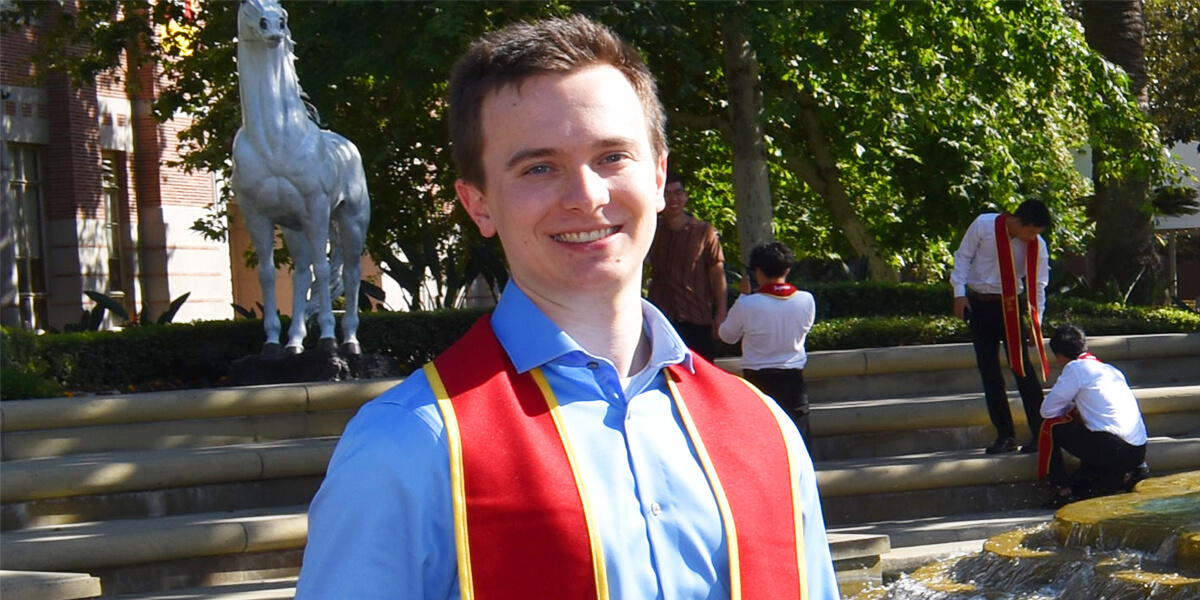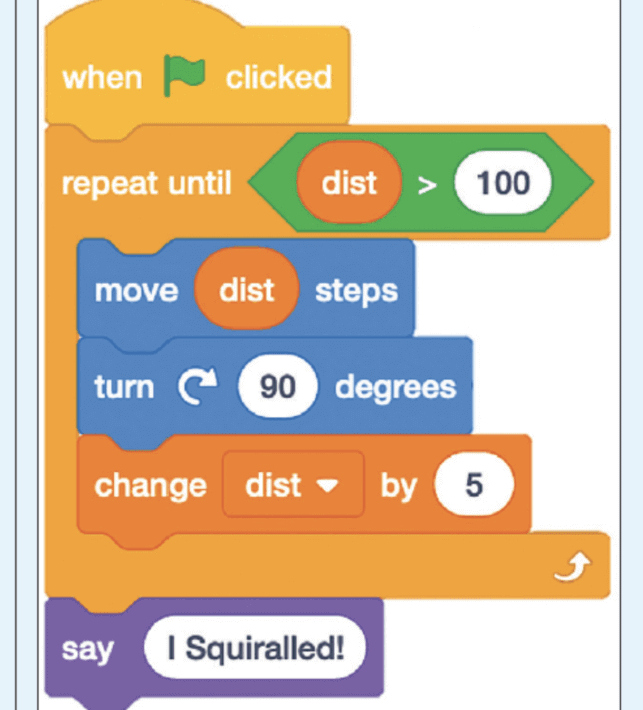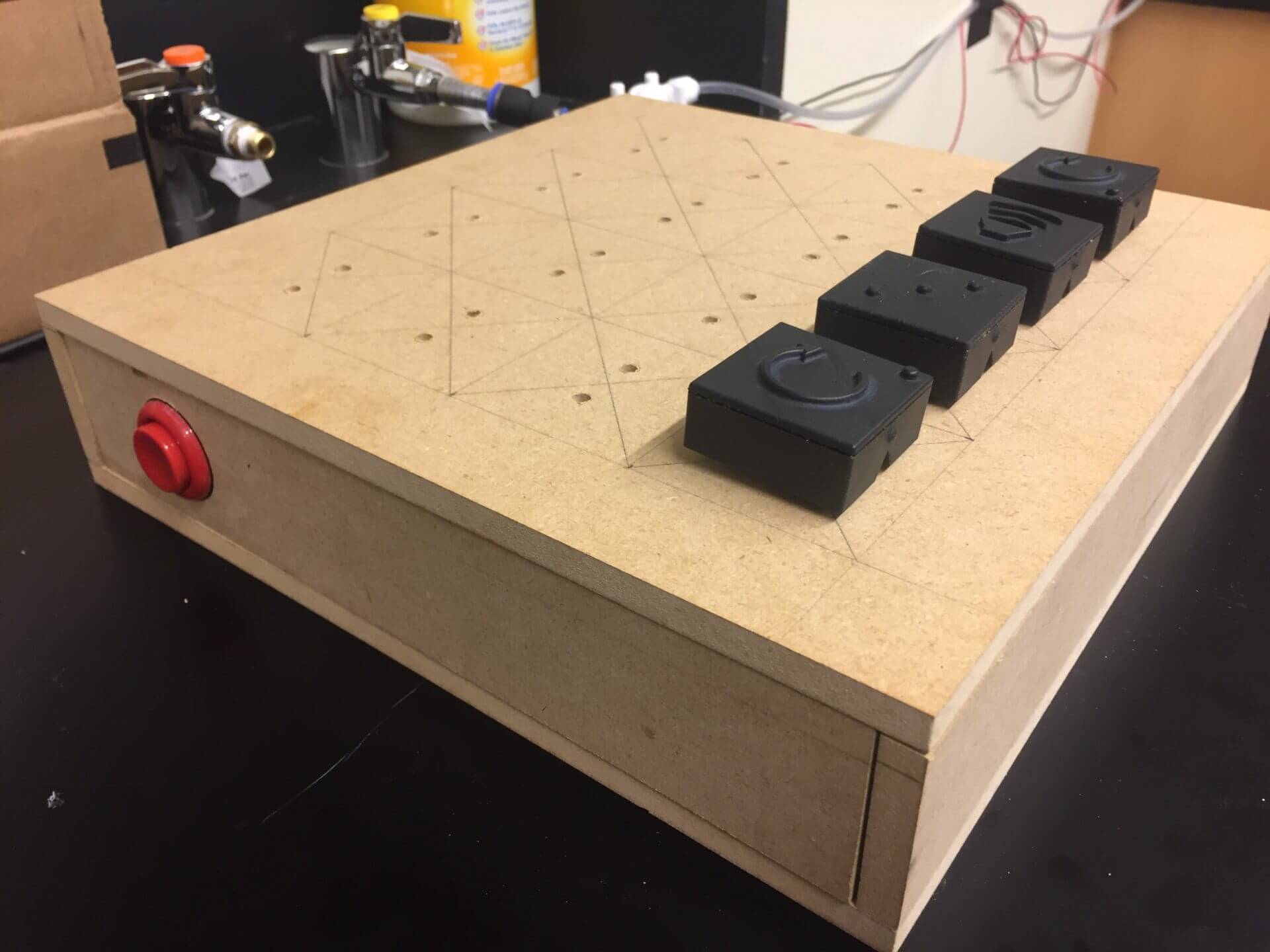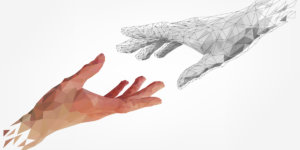
After graduation, Atcheson will join the University of Illinois at Urbana-Champaign to pursue his Ph.D. in Computer Science, concentrating on human-computer interaction. Photo/Jess Williams.
In the past few years, many initiatives have aimed to get more kids involved in computer science. But most technologies used to teach coding are not accessible for children who are blind or visually impaired. It doesn’t have to be that way, says USC computer science senior Samuel Alex Atcheson.
In an effort to change the status quo, he is working on technologies that use the sense of touch—or haptics—to help people with visual impairments learn how to code. Since 2019, Atcheson has been working in Assistant Professor Heather Culbertson’s Haptics Robotics and Virtual Interaction Lab, which explores the sense of touch in technology. Through his research, Atcheson aims to explore the connection between touch and learning to improve educational experiences.
“I’m interested in understanding ways to mitigate barriers to learning, especially for students who experience a cognitive or physical impairment that can make classroom learning a more challenging prospect,” said Atcheson, who graduates on May 14. “Computer science is a highly visual space, and for those students who experience some form of visual impairment, the challenges of a computer science curriculum can be magnified.”
Interacting with code through touch

An example of a traditional block-based program.
While visual block-based environments are popular for teaching coding, they are not accessible to people with visual impairments. Instead of a visual output, Atcheson prototyped and fabricated a 3D-printed device with a tactile user interface that allows people to interact with code through touch.
Using this tactile programming device, users can arrange coding blocks—small 3D objects, each representing a different coding element—to generate functional programs. Rather than relying on sight, a user would be able to feel the symbol present on each coding block, which can be used to create simple programs by placing them in the correct order.
“As the user places blocks to write their code, they can simply press a button in the programming space to have their code run,” said Atcheson.
“They’ll get some non-visual output, like hearing a sound or making a propeller turn, for example. If their code does not work properly, the programming environment will provide verbal, non-technical feedback to try and root out where their mistake may be coming from.”
Atcheson is currently finishing modifications to the final system, and plans on testing it this summer in a study. He believes high schools would be an ideal setting for his technology as a supplementary instrument to teacher instruction.

An earlier prototype of the visual block-based environment designed and 3D-printed by Atcheson.
“Alex has shown great creativity and ingenuity, both in defining his research direction and in the approach he has taken,” said Culbertson, his supervisor.
“He brought a unique combination of skills to my lab, and I would often find him helping others on their projects in addition to his own. He is one of the top undergraduates I have worked with—I know his research will have a large impact both on the fields of haptics and human-computer interaction, and the educational community.”
One random act of kindness at a time
A “proud Buckeye” from Columbus, Ohio, Atcheson has always been interested in helping others. In high school, he undertook a two-year research volunteer internship at the Ohio State University Center for Brain and Spinal Cord Repair, and also worked as a mathematics instructor and literacy tutor.
But it wasn’t until he joined USC that he saw how technology could be used to improve access for people who may experience challenges at school. While completing his degree, he also worked as a tutor with the Joint Education Project ReadersPLUS program, working with K-5 grade children on their math and literacy skills, and USC Science Outreach.
A recipient of the USC computer science undergraduate research award, after graduation, he will join the University of Illinois at Urbana-Champaign to pursue his Ph.D. in Computer Science, concentrating on human-computer interaction.
How does he plan to make an impact in the world? He’s inspired by a Morgan Freeman quote: “How do we change the world? One random act of kindness at a time.”
“As I move on in life, I hope to always be involved in outreach,” said Atcheson, who plans to continue to work on increasing accessibility and equity and experience. “I’m passionate about education and helping students succeed, and I plan to continue to provide scholastic support and mentorship.”
His advice to other students considering a similar path? “Don’t let the fear of the unknown steer you away from your heart and mind. I believe that everyone’s journey in life is different. There is no wrong journey.”
Published on May 13th, 2021
Last updated on September 29th, 2022











